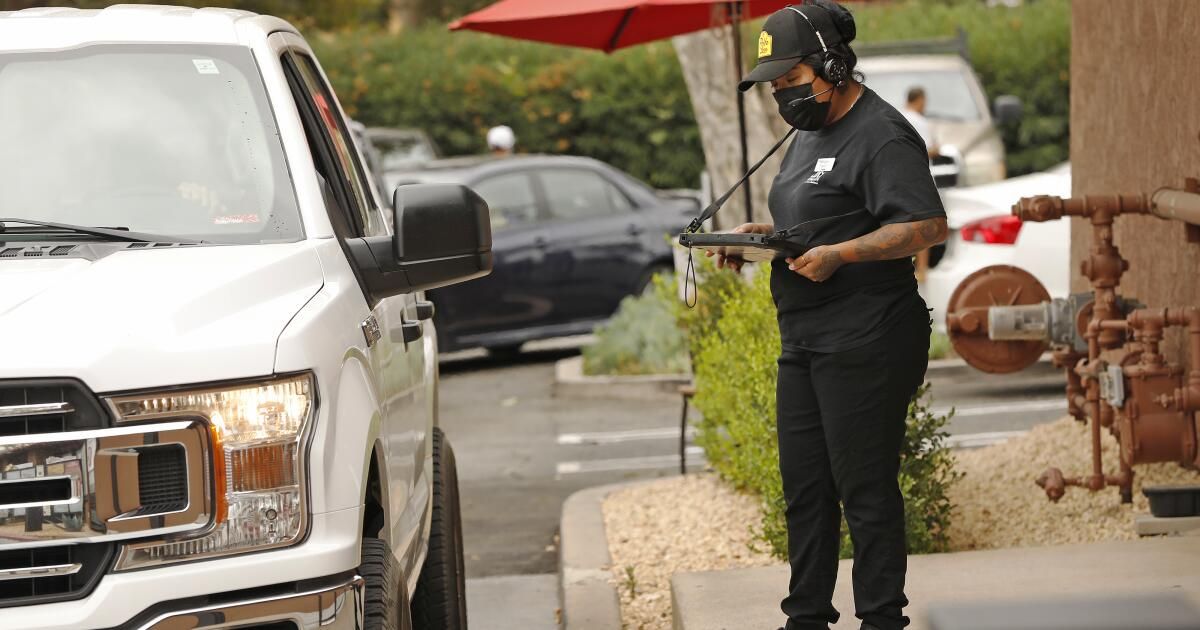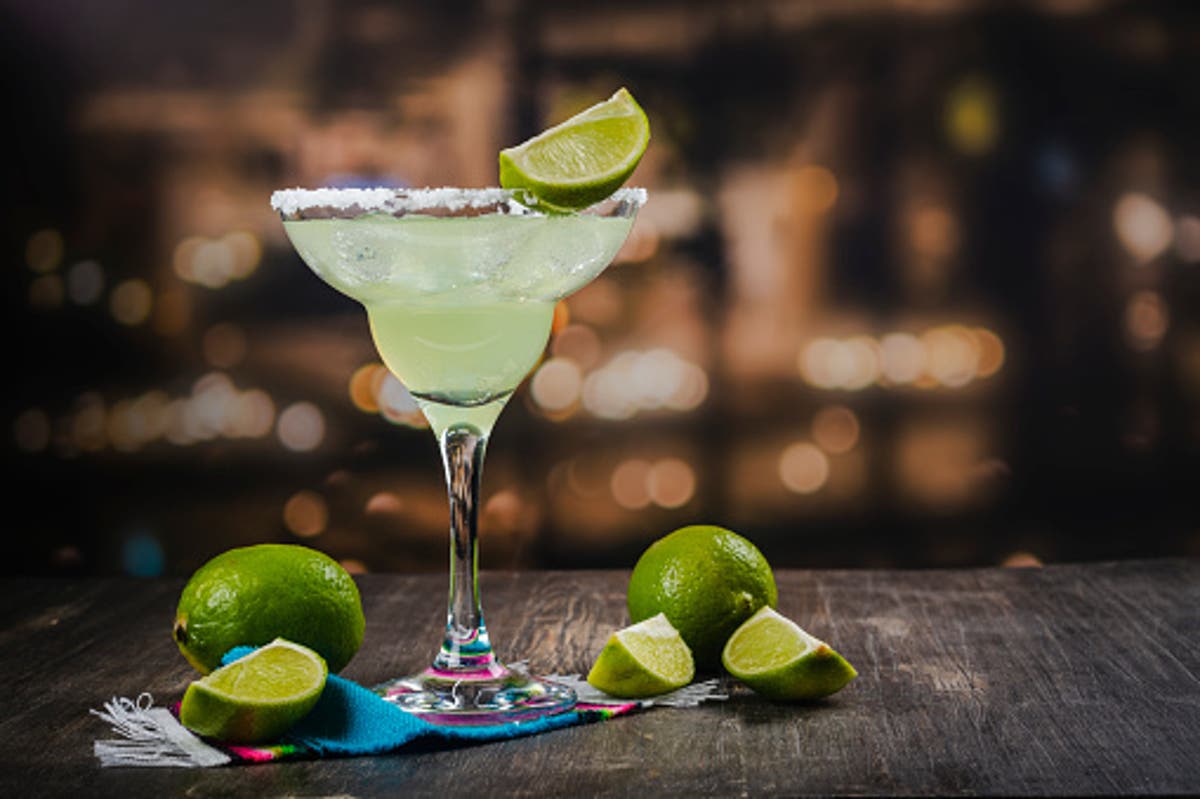It didn't take long for Harshraj Ghai to respond to the impact of California's new $20 an hour minimum wage for his 3,700 fast-food restaurant employees.
Ghai and his family operate 180 Burger Kings, Taco Bells and Popeyes chicken restaurants across the state, and one of the first things they did after the law went into effect on April 1 was start limiting workers' hours. to avoid paying overtime. Additionally, they are closing some outlets a little earlier and opening others a little later to avoid paying workers for less profitable periods.
But the most important thing Ghai and his family are doing doesn't directly involve workers: They have accelerated and expanded the use of technology, especially artificial intelligence.
At this point, they have moved up their plans by several years to install self-service kiosks at all of their locations, including 25 out of state.
But what Ghai is most hopeful for to offset higher labor costs is having AI handle customer orders placed at the drive-thru. It is testing the machine learning system this month in some locations and hopes to roll it out company-wide by this time next year.
Drive-thrus, of course, are quintessential California, with its car culture and fast lifestyle. And now, with AI entering the scene in a big way, the state is emerging as ground zero for what many analysts see as the next big thing in the world of fast food and beverages.
Not that AI-powered self-service is ready for prime time. As it stands today, the system can struggle with people's accents and ambient noise, making it difficult to recognize speech and translate it into text. Pilot programs run by McDonald's and others so far have often backed the AI technology with an employee, like the Wizard of Oz's man behind the curtain. The invisible worker, from as far away as the Philippines, monitors and sometimes steps in to complete an order if the AI fails.
Still, Ghai believes that once the problems are resolved, it will be a blessing for fast food operators like him.
“It has the potential to be the most impactful,” says Ghai, 39, whose Indian immigrant father, Sunny, started the family business in 1998 by purchasing a bankrupt Burger King in San Jose, where he was an assistant manager.
What pushed the envelope for companies like the Ghais' was the sudden 25% increase in California's minimum wage for the state's half-million fast-food industry workers.
To cope with the huge increase in labor costs, which average about a third of a fast food store's sales, many of the affected business owners immediately raised menu prices.
Ghai said he has increased prices overall this year by only 2%. But that has not been the norm. As of last month, at many franchises across the state, from Jack in the Box to Chipotle to Starbucks, consumers on average were paying a mid- to high-single-digit percentage more than just a month or two earlier, a survey found. conducted by BTIG, the research and investment banking firm.
Relatively few appear to have resorted to layoffs, in part because many already had skeleton staff. So to curb further price increases, a growing number of fast-food operators are rushing to install as much automation as they can afford.
Perhaps the most visible and those that will soon be widely adopted are all types of kiosks for ordering food. Self-service machines have been around for more than a decade, but franchise owners like Michaela Mendelsohn resisted for many years.
“We just didn't want to force our customers to use technology. We thought personal contact was important,” said Mendelsohn, who has six El Pollo Loco restaurants in Los Angeles and Ventura counties.
But when the industry's base wage rose to $20 an hour, he said, that represented $180,000 in additional labor costs per year per store. A month after the pay increase, Mendelsohn purchased two permanent kiosks for each of her six restaurants. That cost him $25,000 per store, for two screens, installation, software and other related costs. One of the two machines accepts cash, which she said was necessary for her blue-collar clients.
A Los Angeles restaurant Carl's Jr. In California, CKE Restaurants, owner and franchisor of Carl's Jr. and Hardee's, appears to be at the forefront of using artificial intelligence technology.
(Los Angeles Times)
Mendelsohn estimates that the kiosks could save five hours of work a day. By that estimate, the machines would pay for themselves in a year and shave about 20% off the cost increase from the last minimum wage increase. “We're scaling it back,” he said.
Self-service kiosks are ubiquitous in Western Europe, but are found in less than 20% of fast-food establishments in the United States, says Perse Faily, CEO of Los Angeles-based Tillster, an early kiosk provider. and other digital devices. Platforms for restaurants.
The COVID-19 pandemic fueled the trend in the U.S., he said, and now in California: “We're seeing this sea change in thinking: 'How do I address my labor costs?'”
Kiosks can be attractive because they can not only save labor, but also generate higher sales. Unlike people, programmed machines always try to “up-sell”, never forgetting to ask customers if they want a drink with their meal or something else to accompany the main dish.
Faily, Tillster's chief executive since late 2007, did not disclose the company's sales growth, but said its new customers include Burger King and Popeyes, and that employment at the company increased by 75 people over the year. previously, to 340 currently. “The increase in the minimum wage has completely changed the landscape,” he said.
Other computer-guided improvements also aim to reduce labor costs, from automatic avocado peelers and dishwashers to robotic arms that flip burgers and fryer baskets.
But investment returns, while helpful to the bottom line, don't do enough to offset rising payroll expenses. So for now, relatively few fast-food operators are making big investments in robotics and similar mechanical devices.
AI, on the other hand, looks like it could be a game-changer.
The pandemic boosted drive-thru traffic at fast-food locations to about 80% of sales from two-thirds before COVID, said Peter Selah, restaurant industry analyst at BTIG. And AI order taking opens up the possibility of speeding up the drive-thru process, increasing sales, and reducing significant labor overhead.
But analysts say it will likely be at least a year or two, maybe more, before AI-powered drive-through reaches a consistent and high enough level of accuracy that companies are comfortable with. By various accounts, the tests have often left frustrated customers demanding to speak to a real person rather than a robot.
Major fast food brands were reluctant to talk about their in-vehicle AI sales efforts. Nationally, McDonald's has been leading the way, using a system developed by IBM. A spokesperson would only say that McDonald's “continues to gather insights from the approximately 100 pilot restaurants testing automated order-taking technology in the U.S. We look forward to sharing more later this year.”
In California, CKE Restaurants, the owner and franchisor of Carl's Jr. and Hardee's, appears to be on the cutting edge of technology, but like other chains including Taco Bell, Burger King and El Pollo Loco, CKE declined to comment.
Analysts, however, say that none of the AI platforms have achieved more than 85% success without human intervention being necessary.
“The hardest part is when you have people with accents, from different states and immigrants. It’s a challenge,” said Danilo Gargiulo, a senior analyst covering restaurants for Bernstein, an investment and research firm.
Still, Gargiulo sees the day when AI will speed up the self-service line, increasing sales and consumer satisfaction. “Right now, delivery time is slowed down by repeat orders,” he said. With accurate AI voice recognition and faster, clearer communication with kitchen staff, he said, up to 90 seconds can be shaved from what normally takes a customer 5½ minutes to complete a drive-thru purchase.
Ghai bets on that.
It says its initial investment for the vehicle AI technology, purchased from San Carlos-based Presto, is about $10,000 per store. Ghai estimates that if he can get it running at 90%, a store employee might have to step in to take care of an order just three times an hour, freeing up the worker to perform other tasks.
The artificial intelligence system is improving as it collects more data, he said, and will soon be able to communicate in Spanish. Add to that mobile apps and loyalty programs, and AI has the potential to offer fast food customers faster, more personalized service. And, of course, there's the labor-saving part: Ghai believes AI-powered self-service could shave 10 to 15 hours of pay a day, and double that amount when you have two order takers.
“Our goal is not to get rid of people. At the end of the day, we are in the people business,” she said. At the same time, Ghai added, in the long term “we will have fewer people.”












